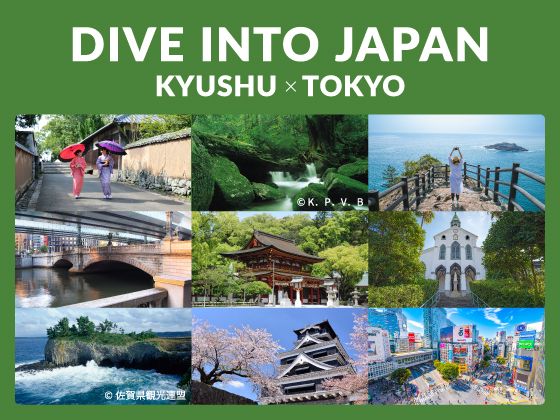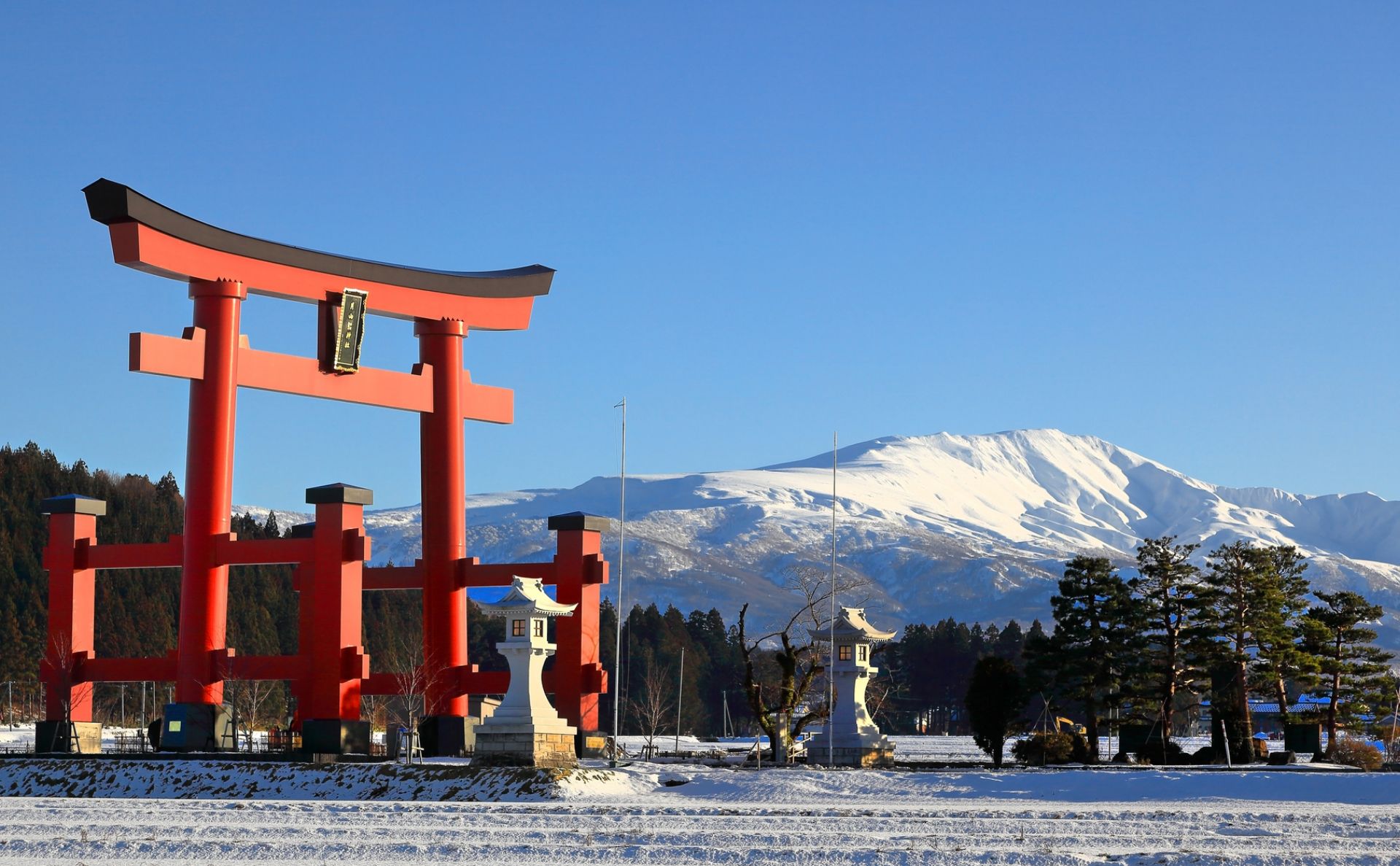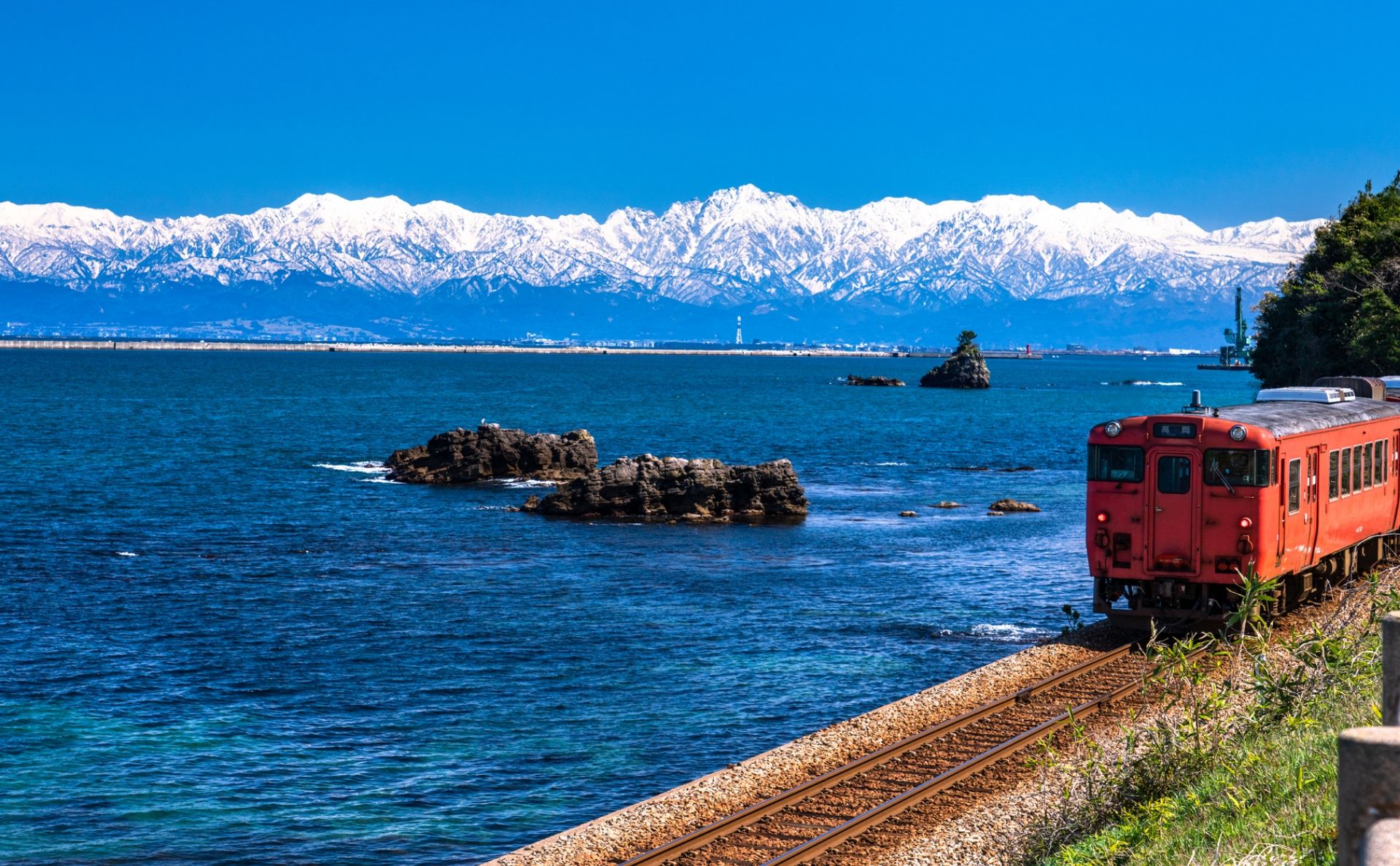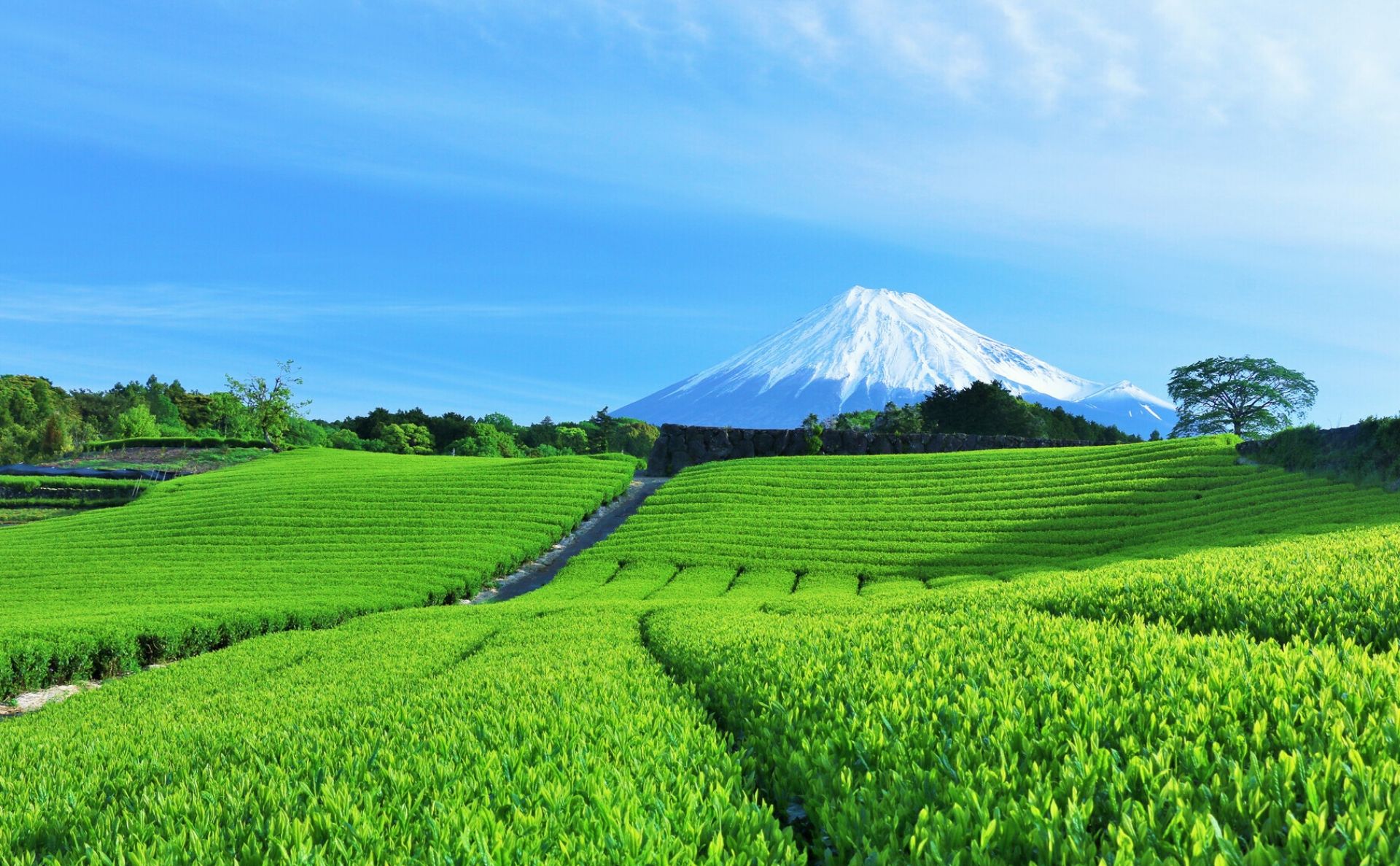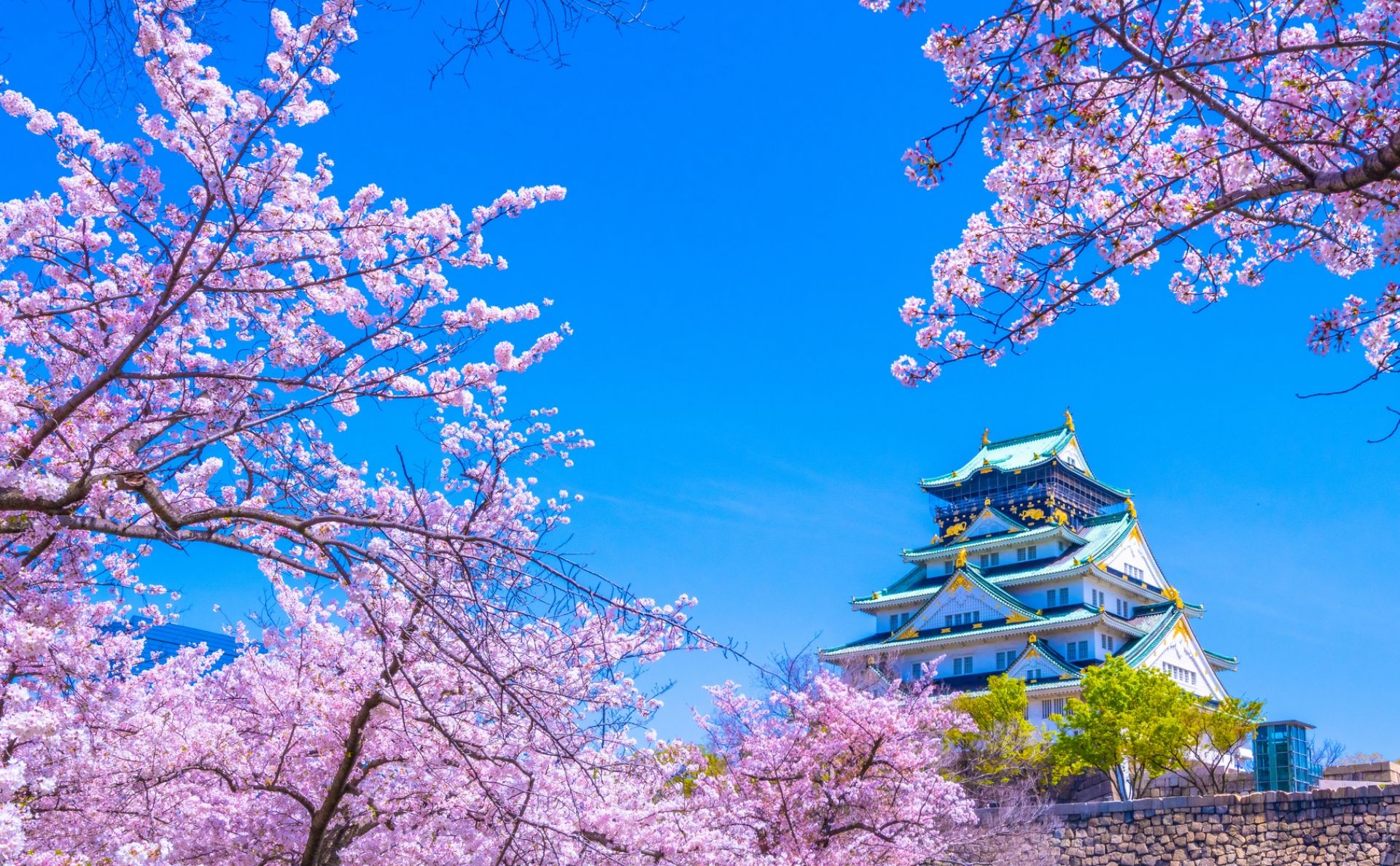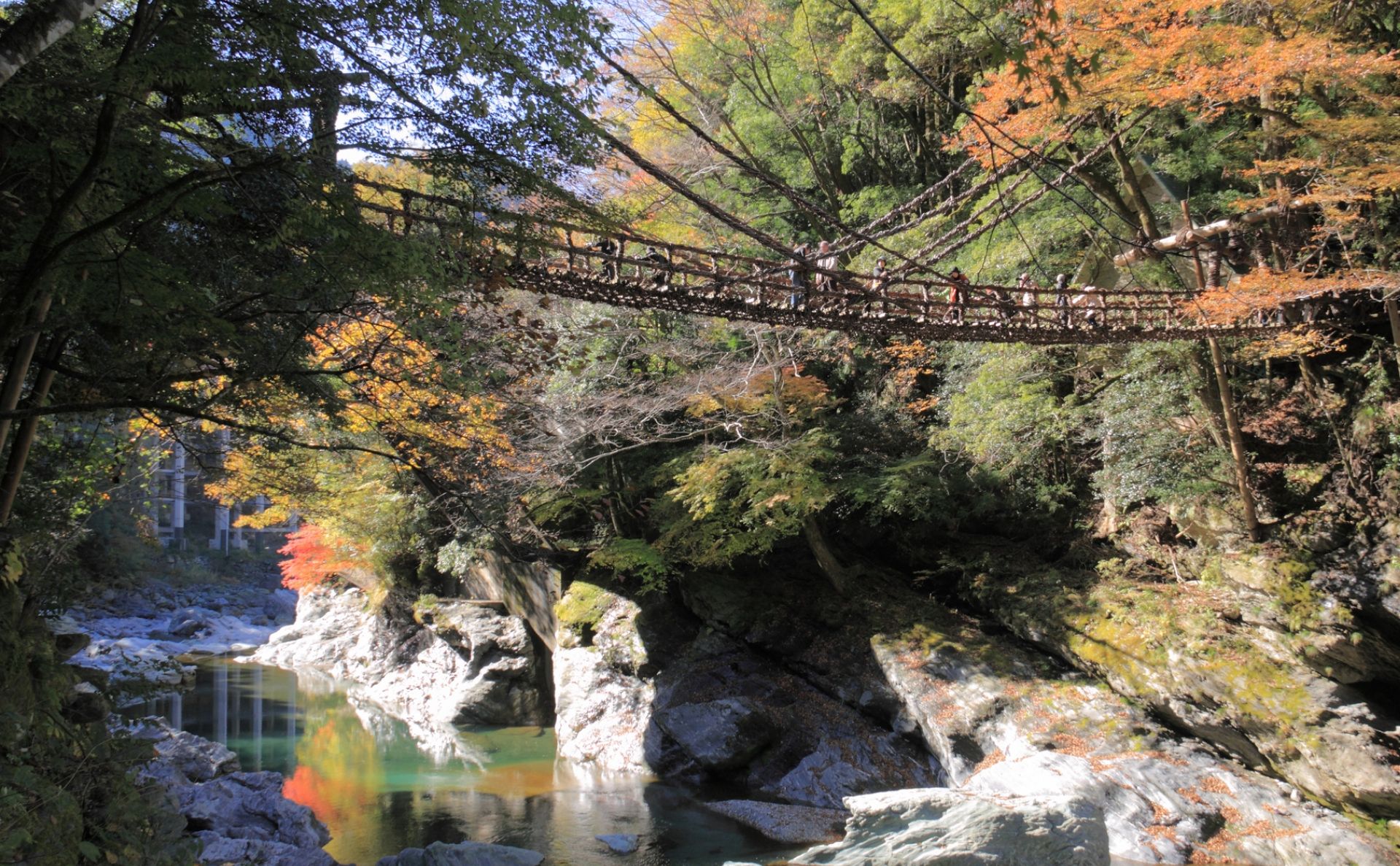Kyushu
Tracing the Sacred
Spirit of Japan’s Land
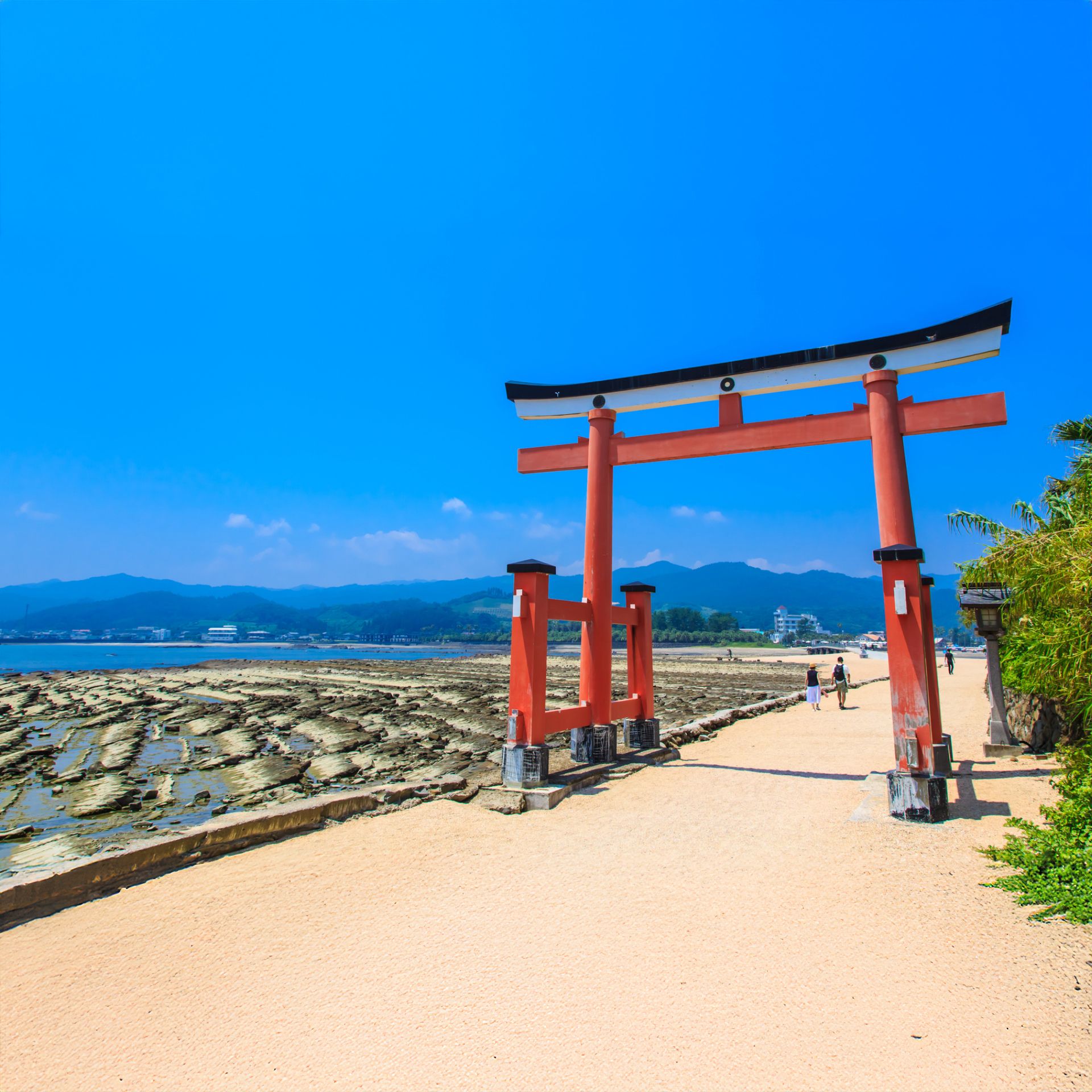
The spiritual side of Japan is rooted in nature with the belief that inanimate objects like trees and rocks contain the spirits of the gods. It's easy to see where these beliefs originated when you witness the sheer power and spectacular beauty found in Kyushu in western Japan.
Tokyo
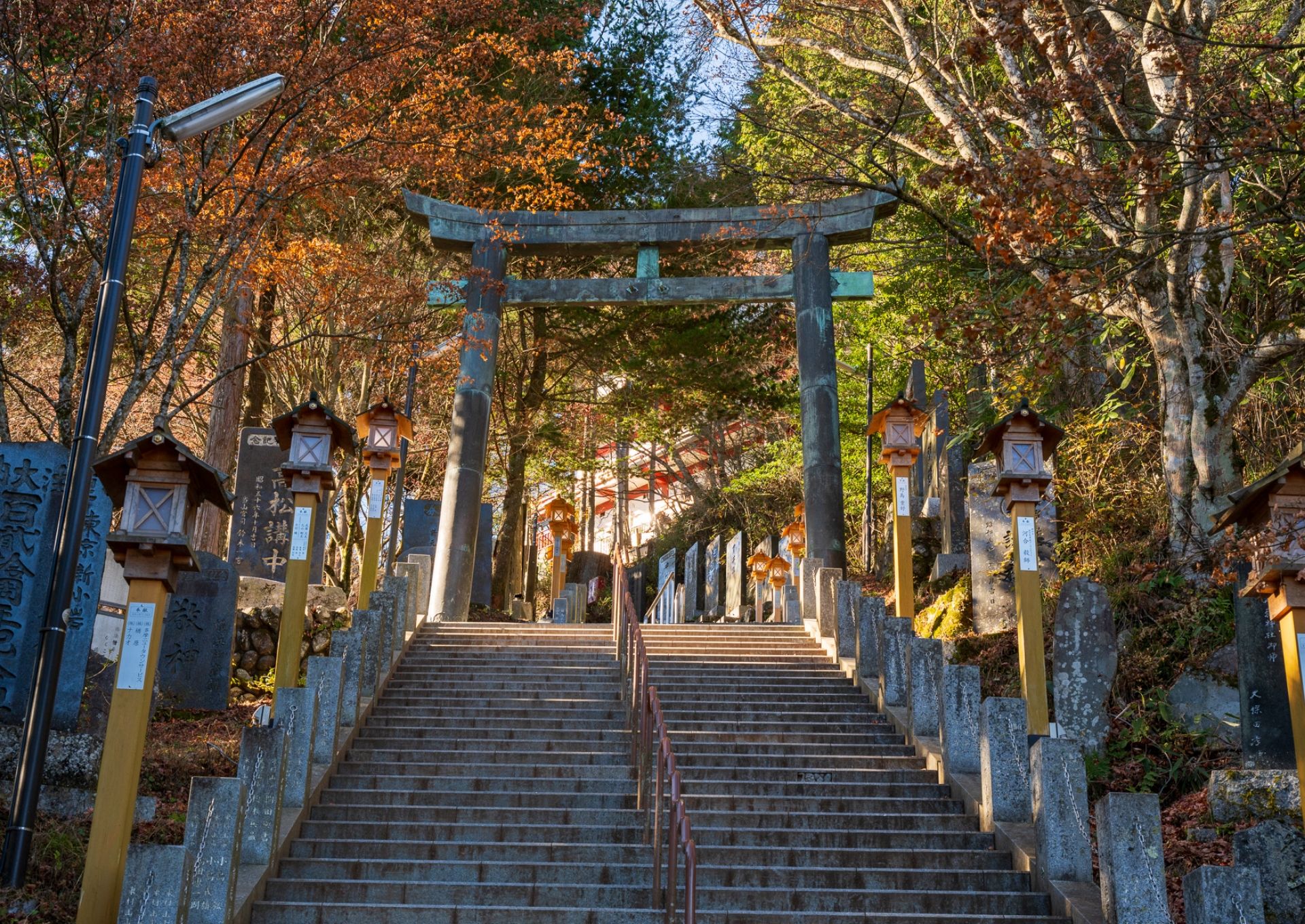
Mount Mitake, Tokyo
Photograph courtesy of Todd Fong
In Tokyo, the sacred mountain Mitake represents the ancient spiritual connection with nature. Located at the western edge of the metropolis, Mount Mitake is a popular power spot for day hikers who visit Musashi-Mitake Shrine at the peak. On clear mornings, you can see the distinctive outline of Tokyo's skyline in the distance, and at 929 meters, the air is refreshingly crisp.
The hike from the base of Mount Mitake is relatively steep, making it a challenge for casual hikers. The Mitake Tozan cable car offers a convenient way to enjoy the mountain so you can conserve your energy to explore the area around the summit. In addition to the 1,300-year-old Musashi-Mitake Shrine, you can trek through quiet forests and along clear streams to the famous Rock Garden and Nanayo Falls, a popular destination for people who want to experience ascetic meditation under a waterfall.
Make your way back to central Tokyo to catch an airplane to your next destination in Kyushu's Miyazaki Prefecture.

Kyushu is the westernmost of Japan's main islands and most of its major cities are served by daily flights from Tokyo International Airport (Haneda).
Miyazaki
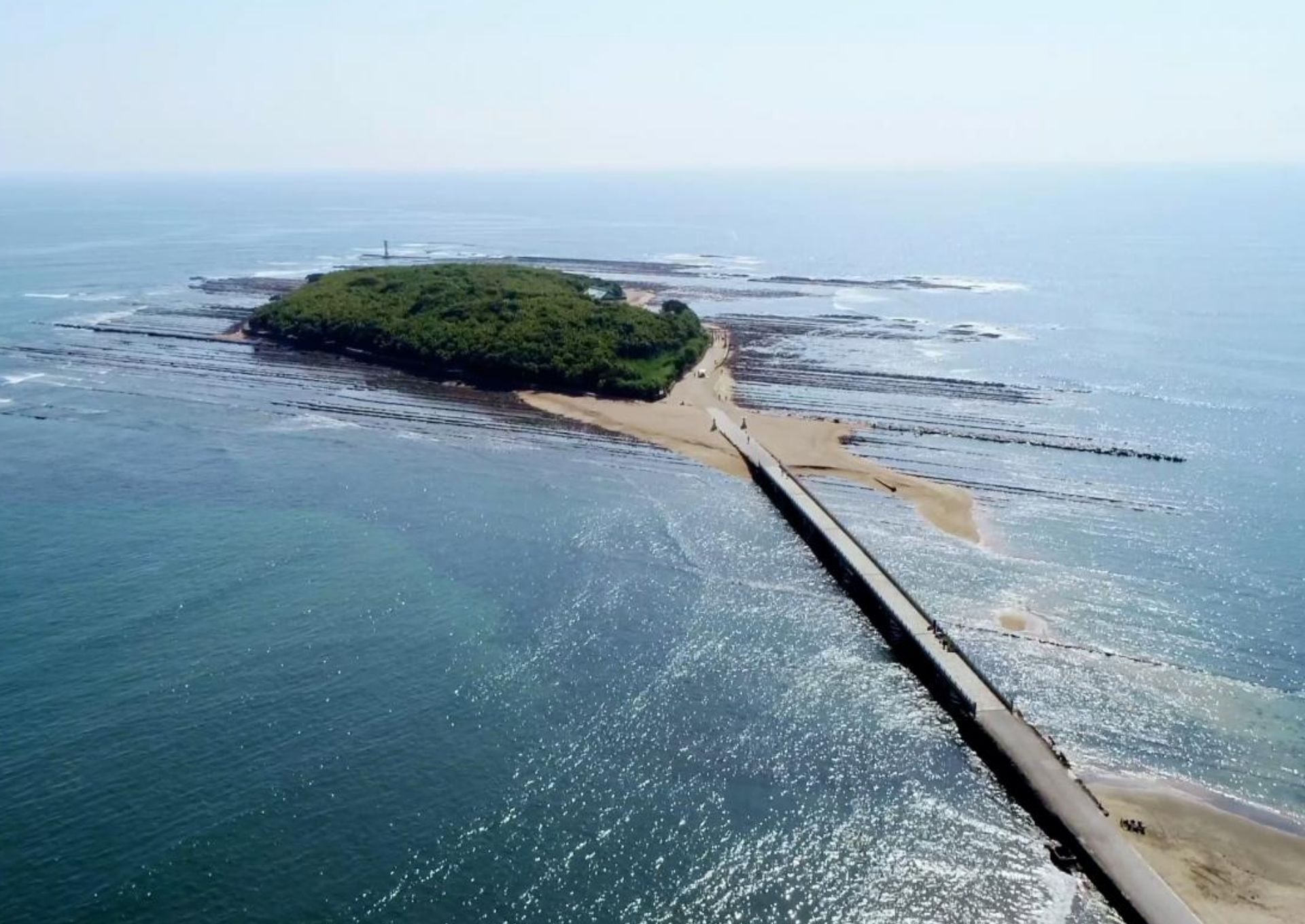
Aoshima, Miyazaki
Just off the coast of Miyazaki City lies Aoshima Island. The island is so close to the mainland that it is permanently connected by a pedestrian bridge to Aoshima Beach, over the emerald-hued waters of the Pacific Ocean.
In fact, Aoshima Island is a mere 1.5 kilometers around, making it an easy island to explore on foot. The entire island, in fact, is the grounds for Aoshima Shrine which lies in the center of the island. This shrine is a popular destination for those getting married or wishing for a marriage partner due to its connection with the god of the land, Yamasachihiko, his wife Toyotama-hime, and their matchmaker. The island's unique environment makes it a hospitable home to over 200 forms of plants.
Surrounding the island, partially hidden beneath the tide, are distinctive rock formations called Oni-no-Sentakuita (The Devils' Washboard) which are designated natural monuments of Japan.
After exploring Aoshima, catch a train to Kagoshima and then board a boat to the lush Yakushima Island.
Kagoshima
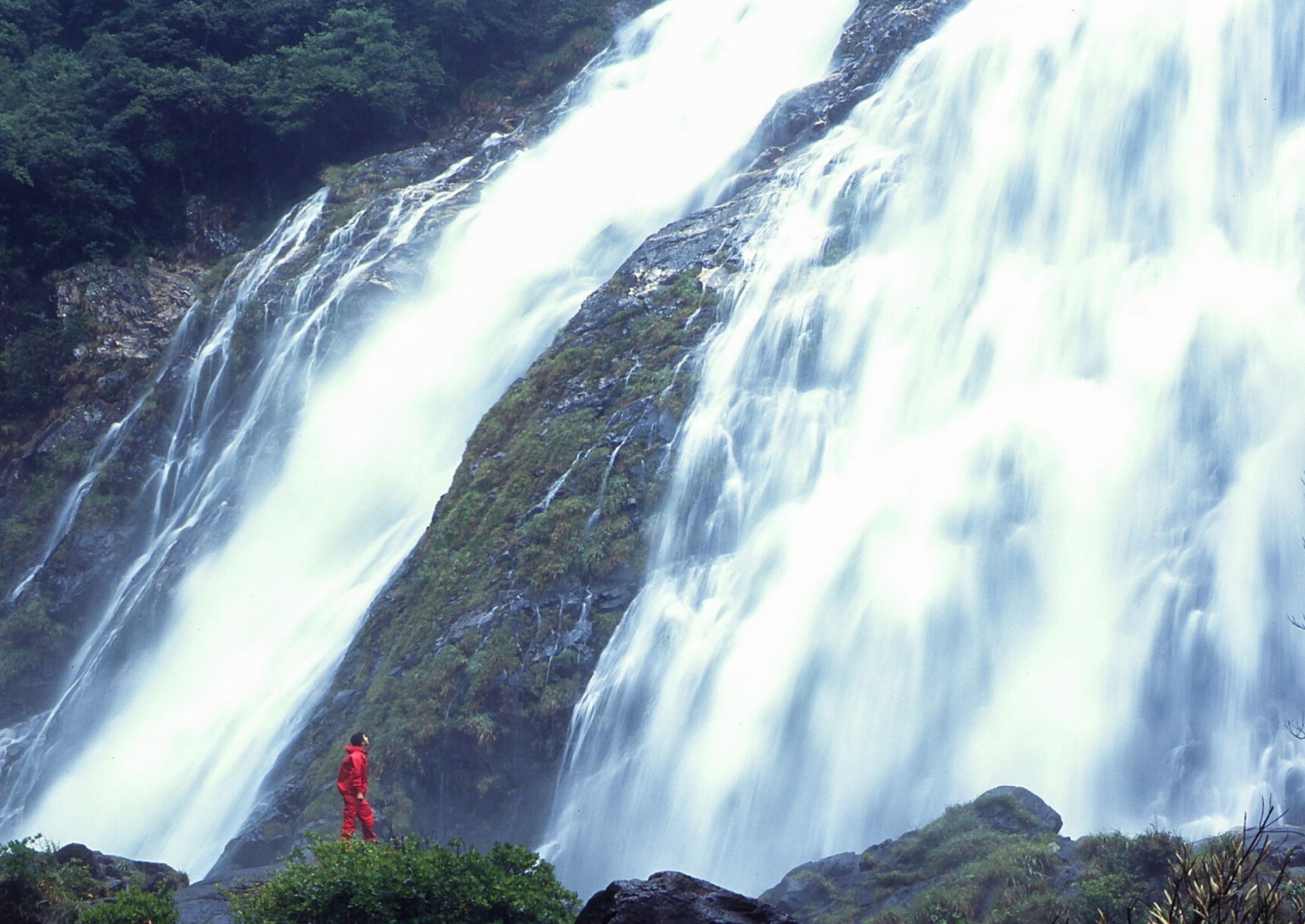
Yakushima, Kagoshima
Yakushima Island is one of Japan’s most unspoiled natural landscapes, with ancient forests long tied to Japanese spirituality. In Yukusugi Land, cedar trees are often more than 1,000 years old, and elsewhere on the island some are believed to be several thousand years in age.
Only part of Yakushima is designated as a national park, and selected areas are recognized as a UNESCO Natural World Heritage site and its Biosphere Reserve. These protections safeguard the primeval forests and diverse ecosystems for future generations.
Because of its steep mountains and wide altitude range, Yakushima is home to remarkably varied vegetation. Subtropical forests thrive near the coast, while temperate forests cover the highlands. Moss carpets rocks and roots in places like Shiratani Unsuikyo ravine, which partly inspired the scenery in Studio Ghibli’s Princess Mononoke.
The island’s climate is equally diverse. Warm and humid conditions dominate the lowlands year-round, while winter snow sometimes blankets the peaks. This seasonal contrast allows visitors to encounter many faces of nature on a single small island. After exploring Yakushima, take a boat back to Kyushu and then a train to Kumamoto, gateway to Japan’s largest active volcano, Mount Aso.
Kumamoto
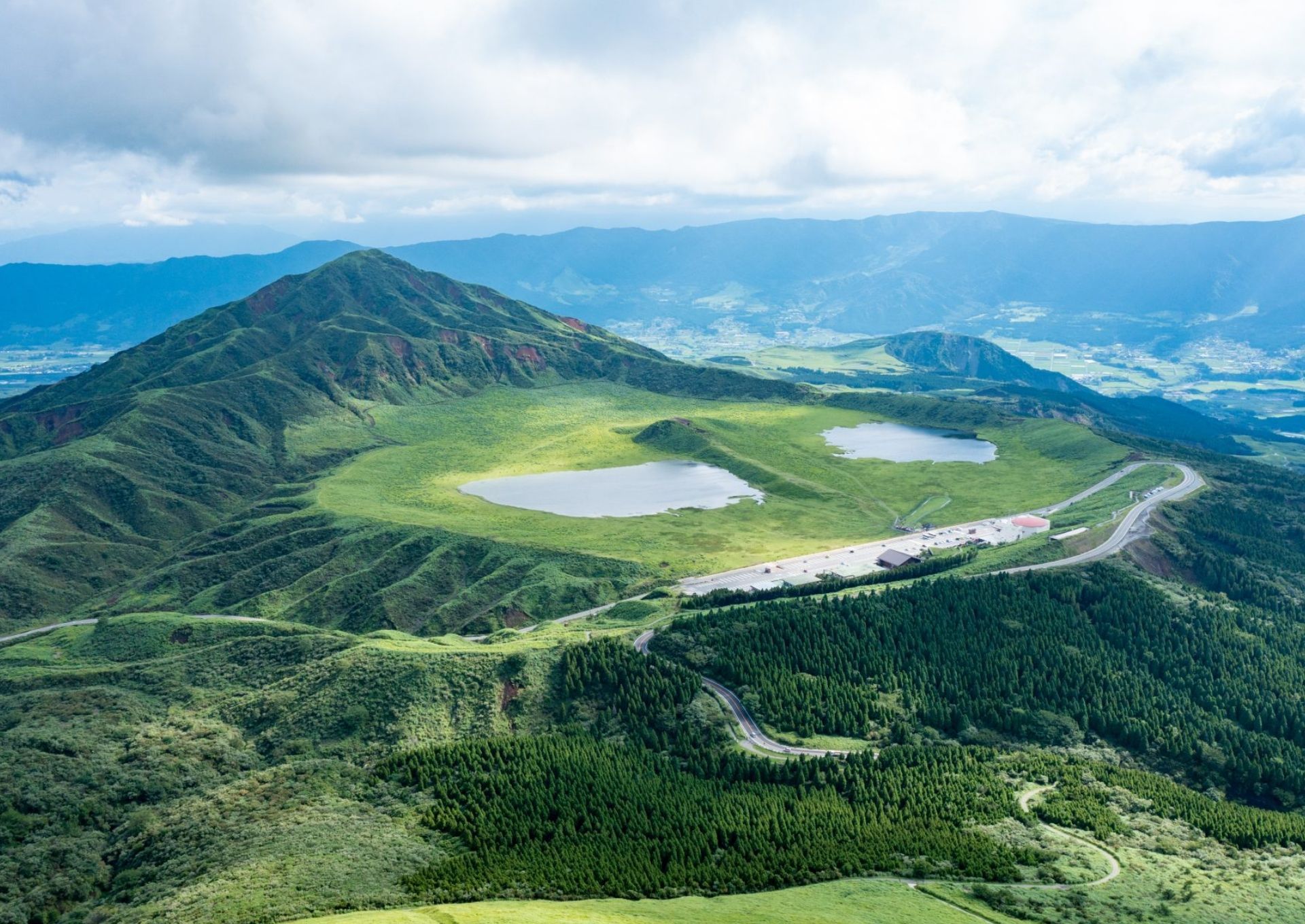
Mount Aso, Kumamoto
The overwhelming power of Kumamoto Prefecture's Mount Aso is immediately evident when you observe the vast and dynamic Aso Caldera Plain created from a blast that occurred 90,000 years ago that covered the entire nation of Japan in volcanic ash. Despite living under the constant threat of new eruptions, the people of this region have embraced the blessings of the volcano: rich volcanic soil and abundant hot spring resources. Consequently, Mount Aso is revered as a sacred mountain, home of the gods. High above the caldera at 1,100 meters is the pastoral beauty of Kusasenri, a vast, lush grassland in the summer, with astonishing views of the volcanically active Nakadake Peak. Don’t miss a visit to the Aso Volcano Museum to learn about the origins of Mount Aso and how people have lived in harmony with the volcano for centuries. You’ll can also photograph free-roaming horses grazing on the grasslands—a uniquely peaceful scene.
From Kumamoto City, the Shinkansen bullet train and a rental car brings you to Hirado Island in Nagasaki, where sacred Mount Yasuman keeps watch over the island.
Nagasaki
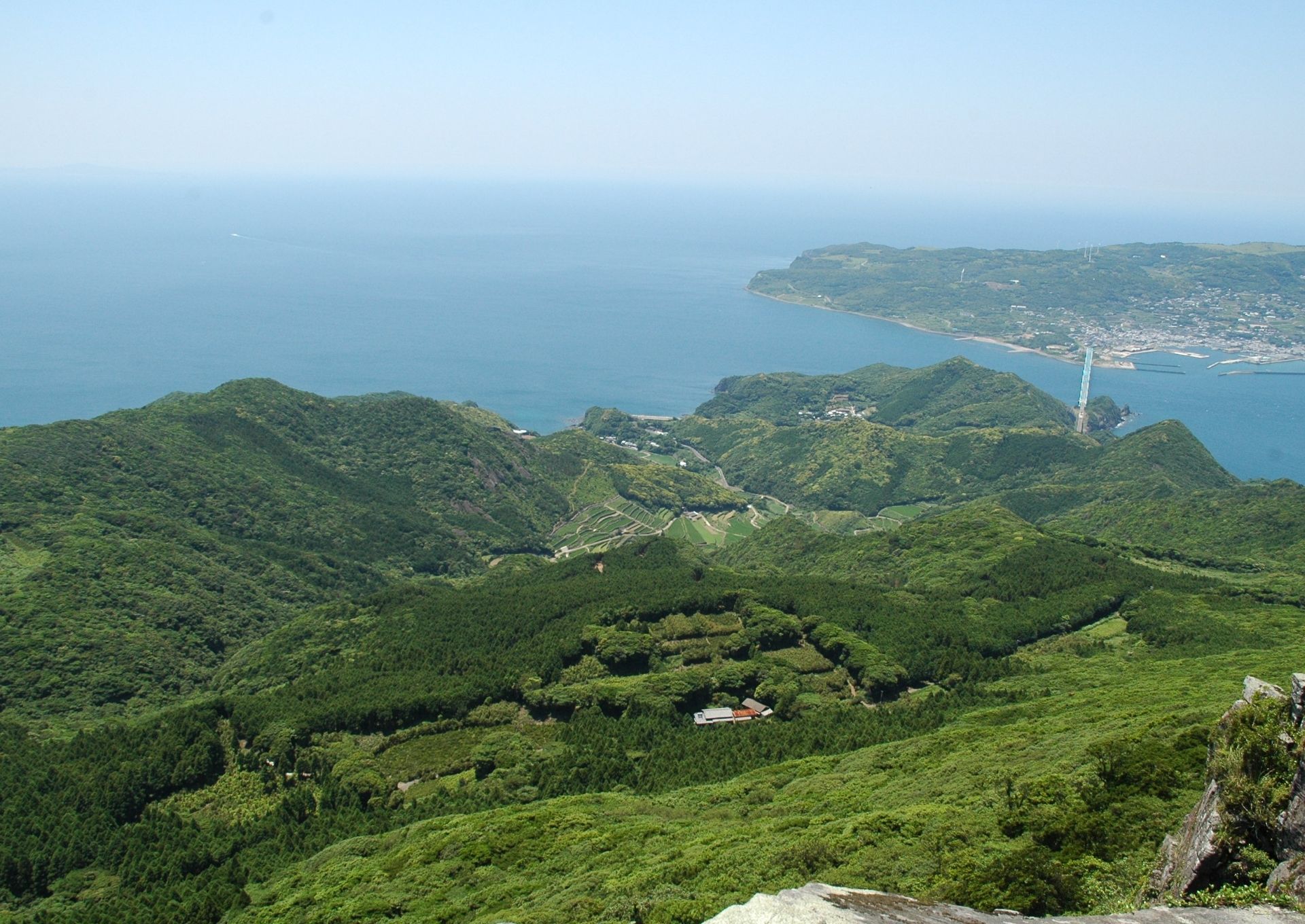
Mount Amamagoe, Nagasaki
The rugged Mount Yasuman is the highest peak on Hirado Island, revered by followers of many different faiths over the centuries. Shinto, Buddhism, and Christianity alike regard Mount Yasuman as a spiritual place. The fresh spring waters flowing down the mountain feed both the pristine Kousone River and the terraced rice paddies of Kasuga Village below.
You can hike along Mount Yasuman's well-maintained trails, through dense forests where rays of sunlight stream through the canopy to the forest floor. When you reach the summit, enjoy spectacular views of the surrounding islands and the historic Kasuga Village, a Hidden Christian World Heritage Site below. At the summit, you'll also find the modest Shirayamahime Shrine, a place of worship for several of Japan's ancient religions.
From Mount Yasuman, reach your next destination by rental car in the neighboring prefecture of Saga.
Saga
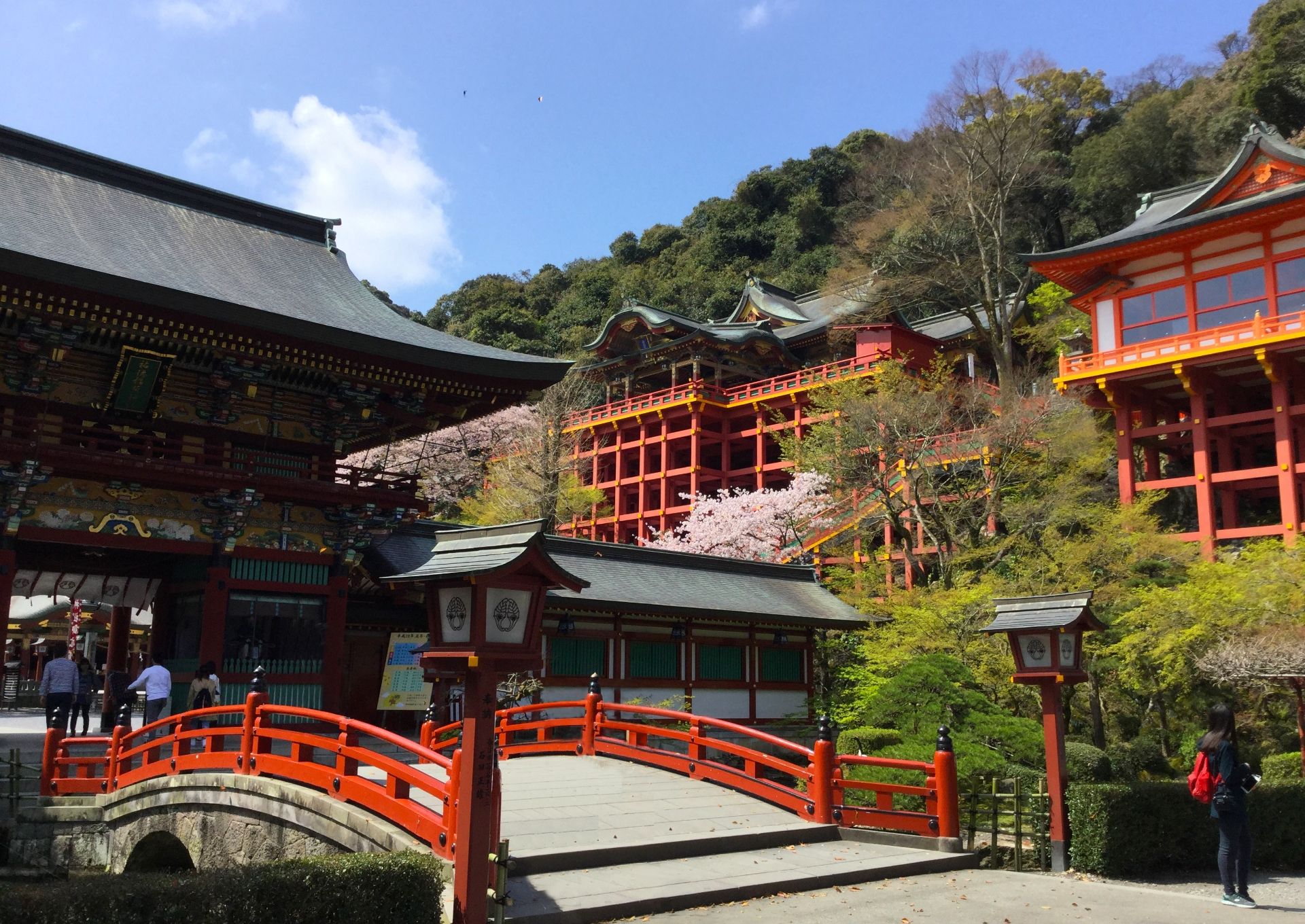
Yūtoku Inari Shrine, Saga
Photograph courtesy of Saga Prefecture Tourism Association
On the steep slope of a valley in Kashima City, Yutoku Inari Shrine draws comparisons to two renowned religious sites in Kyoto: Fushimi Inari Shrine and Kiyomizudera Temple. The first comparison makes sense, as Yutoku Inari Shrine is one of Japan's three great Inari Shrines along with its sibling in Kyoto. The second is more aesthetic, with the main hall of the shrine supported by 18-meter-high beams, looking much like the famous Kyoto temple. Comparisons aside, the shrine grounds are one of the most beautiful spiritual sites in Kyushu.
Three million visitors come here annually to pray for good fortune and safe travels, ascending the steep stone stairs that pass under dozens of bright red torii gates. Seasonal flowers that bloom in winter and spring along with an elegant Japanese garden make the shrine an attraction even to those who just want to spend time outdoors.
For your next destination, drive or take a train and bus northward to Fukuoka Prefecture, home of one of Japan's most important ancient shrines.
Fukuoka
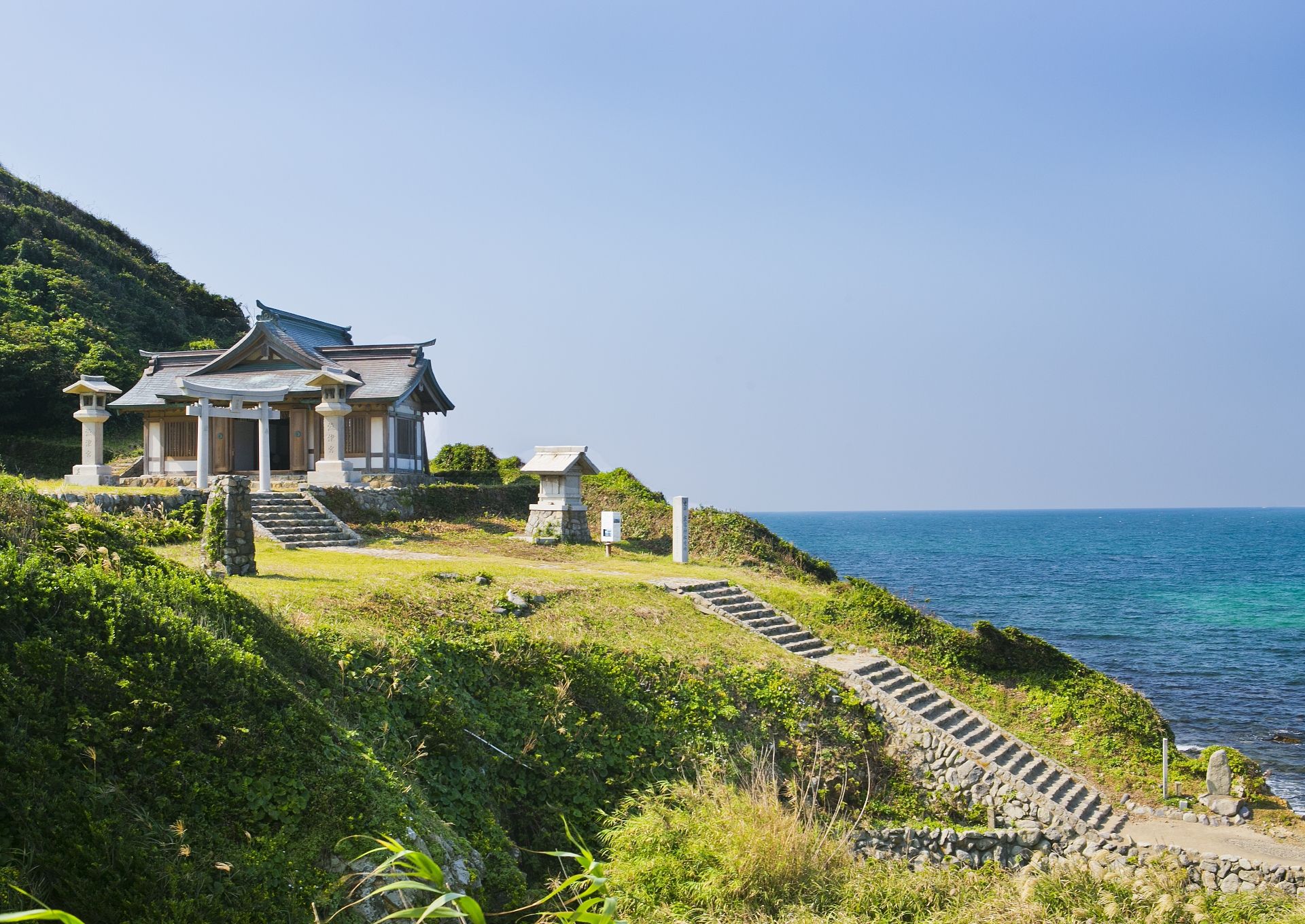
Munakata Taisha Okitsu-miya Yohaisho, Fukuoka
Munakata Taisha is one of Japan’s oldest shrines, appearing in Japanese mythology. It is comprised of three sites: Okitsu-miya on Okinoshima, Nakatsu-miya on Oshima, and the largest Hetsu-miya on the Kyushu mainland. Okinoshima was the site of the original shrine, where rituals were performed from around the 4th century and offerings dedicated to the gods have been unearthed. Today, only shrine priests are allowed to visit the island. Oshima is home to Nakatsu Shrine, at the foot of Mount Mitake. Hetsu Shrine, simply referred to as Munakata Taisha, is the easiest to access and largest of the three shrines.
The shrines were said to be established when Munakata was the primary trade and cultural exchange route with the Asian mainland. The riches of the area are evident in the Shinpo-kan treasure hall of Hetsu Shrine which includes an astounding 80,000 items designated as National Treasures of Japan that were unearthed on Okinoshima.
Your next destination is deep in the mountains of Oita's Kunisaki Peninsula: the ancient Futagoji Temple.
Oita
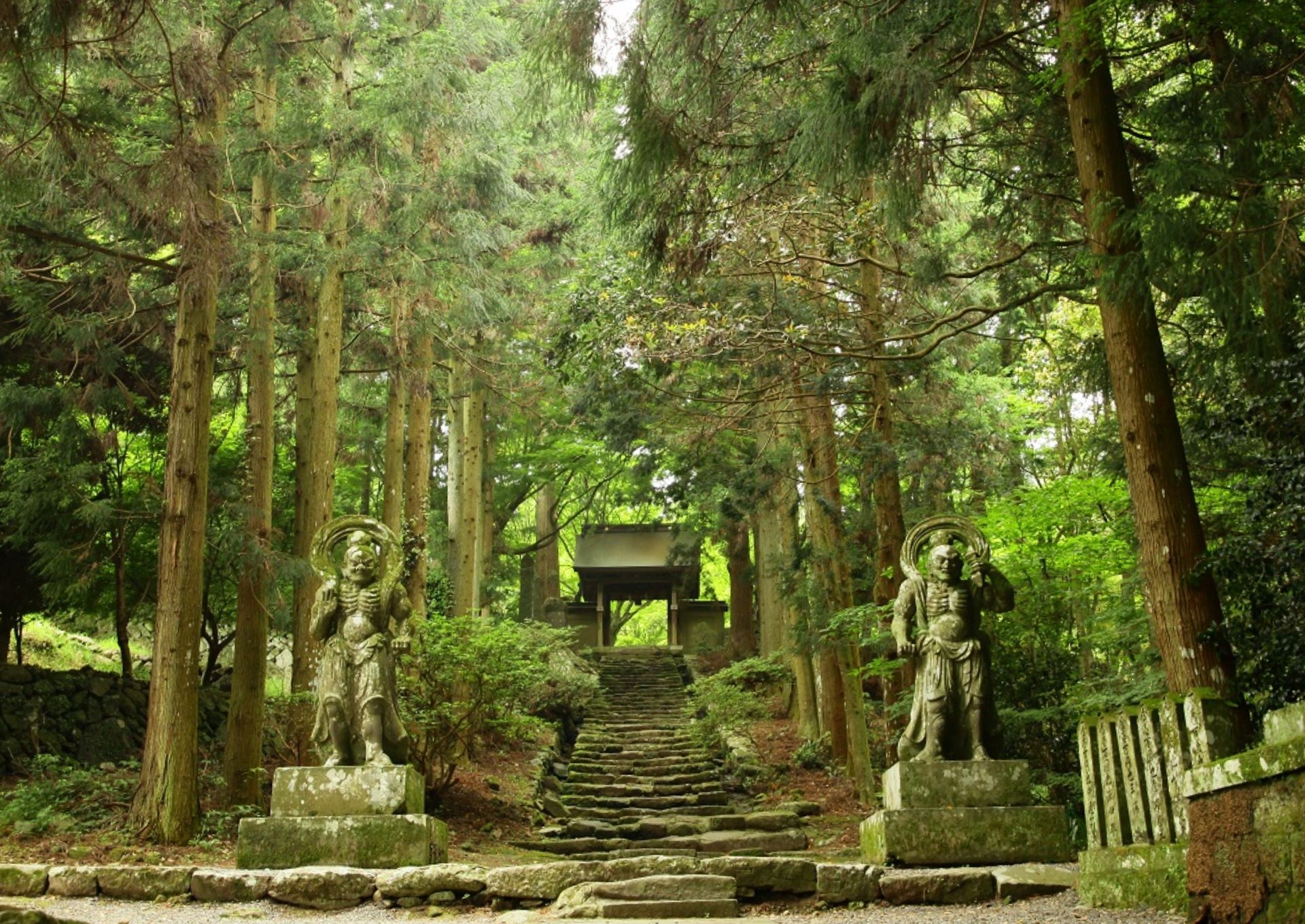
Futago-ji Temple Niōmon Gate, Ōita
Not long after Buddhism arrived in Japan from China, Oita Prefecture's powerful Shinto shrine, Usa Jingu, allowed a Buddhist temple to be built adjacent to it. Soon after, Buddhism, Shintoism, and mountain worship had become so intertwined that a new religion was born from them, leading to the foundation of dozens of new temples in mountainous Kunisaki, one of the most prominent of which was Futagoji Temple.
Situated at the foot of Mount Futago, the traditional approach to the temple is between two imposing statues of Nio Guardians flanking a flight of stone stairs. From this point, you can take a brisk hike up the hillside, exploring the tranquil temple grounds with ancient wooden buildings nestled among the trees. At the top of the trail, you'll reach the Okuno-in, the Inner Temple, built into the cliff face itself and housing a wooden carving of an 11-headed Kannon (goddess of mercy).
With its prominent displays of the beauty and power of nature, it's easy to understand how people of various faiths in Japan came to revere the land they lived on. Through this adventure through Japan's sacred lands, perhaps you too will find a new spirtual connection to Kyushu and Tokyo.
Public Transport Operators
-
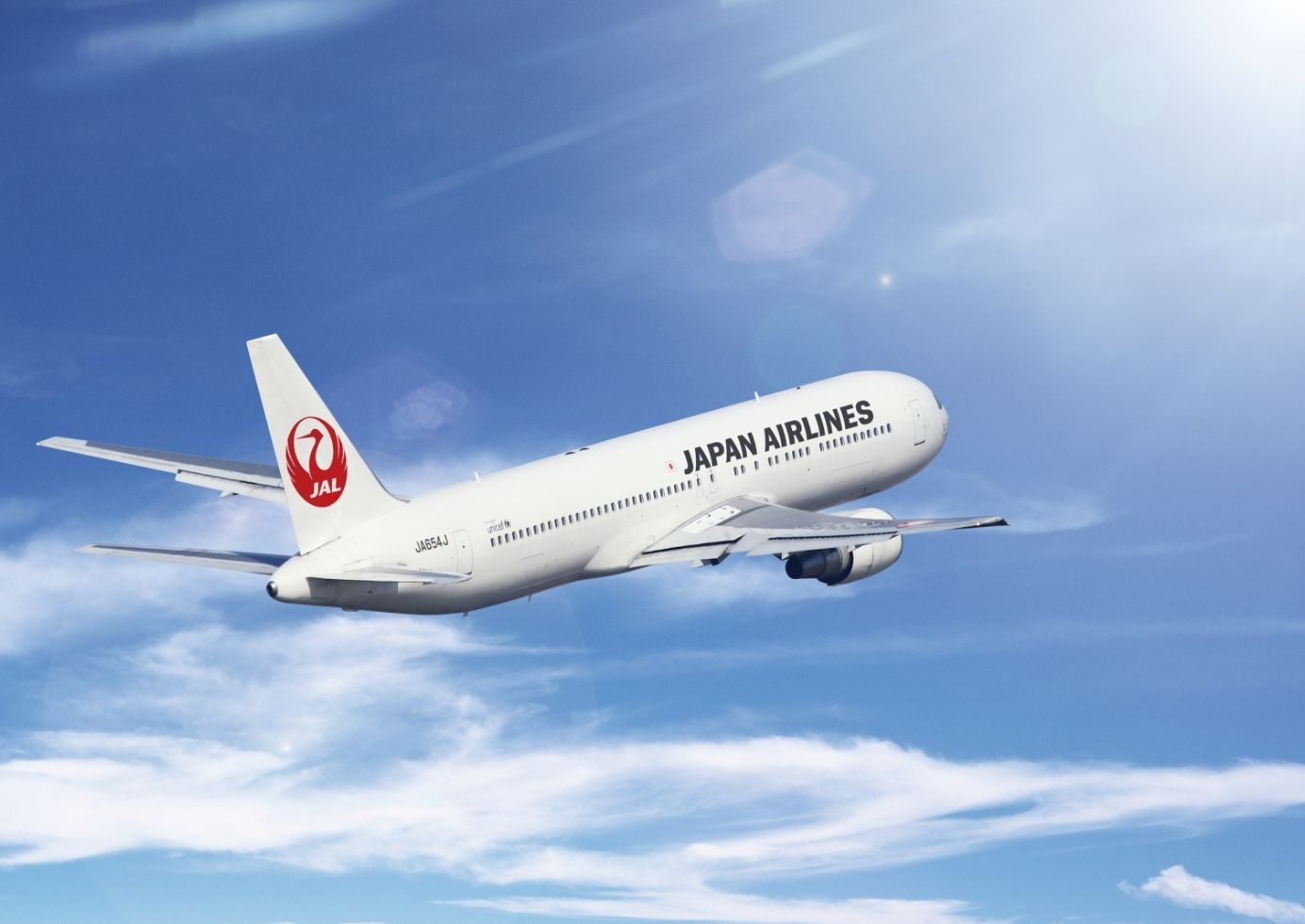
JAL
Japan Airlines operate bound for Kyushu region at 8 Airport( Fukuoka , Kagoshima and so on) and 55RT/Daily, Also We provide Domestic Discount flight. We look forward to your patronage.
-

ANA
Travel becomes more exciting with ANA. We have an extensive network connecting Japan and the world — including service to over 50 airports nationwide. With warm Japanese hospitality, ANA offers convenient access across the country, making every journey more comfortable and turning your trip into a special memory.
-
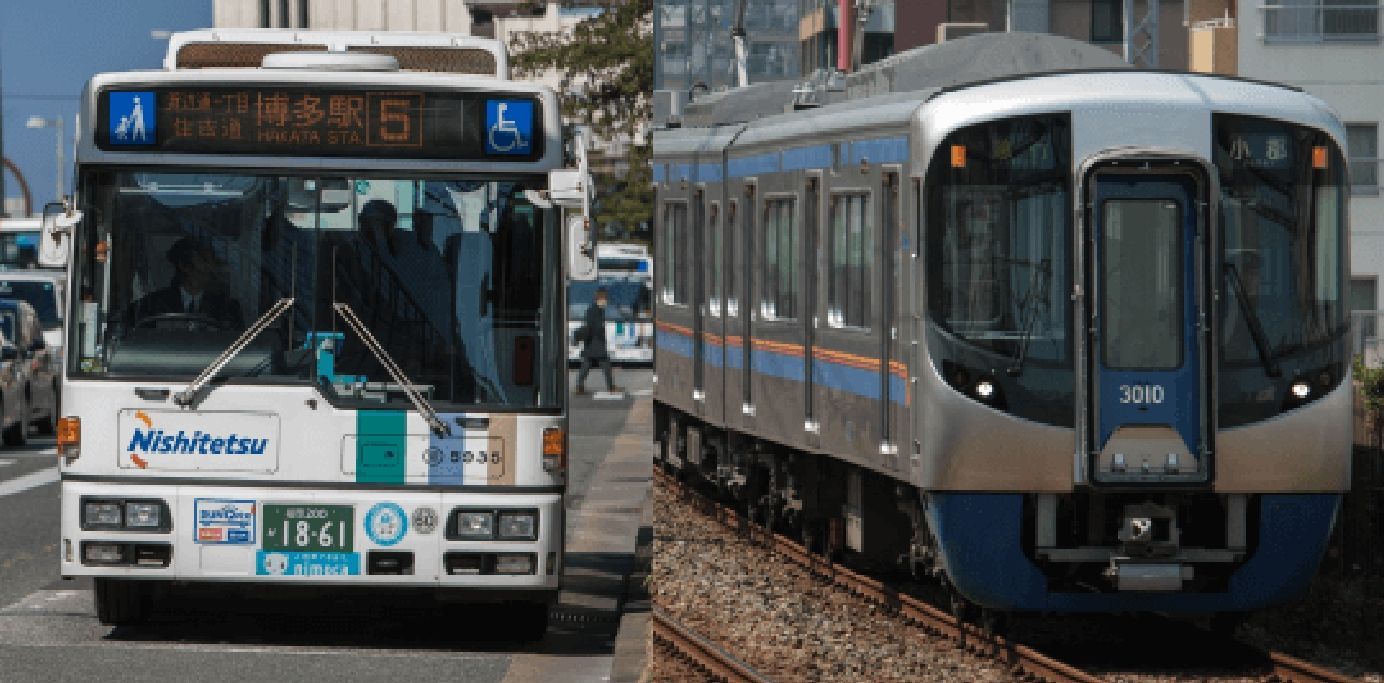
Nishitetsu
Bringing Dreams to Our Cities. We support everyday life with local bus services, connect Kyushu’s cities with express buses, and operate the Nishitetsu Railway. Guided by our ethos of “creating encounters and delivering expectations,” we provide safety, comfort, and excitement as we grow together with communities.
-

JR Kyushu
"JR KYUSHU RAIL PASS" This special pass for inbound travelers allows you to explore all of Kyushu at great value. Enjoy hot springs, stunning nature, historic towns, delicious cuisine, and unique sightseeing trains on a comfortable and flexible rail journey. The pass makes it easy to travel efficiently while fully experiencing the diverse attractions that Kyushu has to offer.
